It can be guaranteed that the first time your car won’t turn over, you’ll be on your way to some important meeting or family event.
It’ll be catastrophically annoying and make you worry that you’re going to have to pay out in repair bills. Right?
In this article, we look to explain what’s going on when your car won’t turn over. We’ll try to give you an idea of the common causes, as well as how to fix them.
Before we get into it – don’t worry. This is an extremely common problem. You are far from alone in it.
The most common causes are…
Click on these above links to jump straight to the relevant section.
To check out some related articles on our website, check out What to Do if the Car Battery is Empty and Is It Time For a New Battery?
My Car Won’t Turn Over
Although many people often use the term “turning over” as being interchangeable with “starting”, this isn’t technically correct.
You’ll all know what “starting” a car is. It’s when the engine comes on and runs by itself. You no longer need to hold the key in the “start” position, or you can let go of the ignition button.
“Turning over”, however, is another word for “cranking“. If the car won’t turn over, it means that you won’t hear that rrr – rrr – rrr noise when you try to start it up. There will either be nothing or just a “click” sound.
When your car won’t turn over, it’s usually a problem with one of the electronic ignition components. Most commonly, this will be the battery or the alternator.
When your car won’t “start”, it’s more likely to be a problem with something in the air/fuel system.
The key difference is hearing that rrr – rrr – rrr sound.
In this article, we’ll be focusing on problems where the car won’t turn over, rather than where the car won’t start.
Why Won’t My Car Turn Over
Okay, so it should be clear that we’re only talking about internal combustion engines (ICEs) here. Gasoline or diesel, usually. This problem won’t happen if you drive an electric car – it doesn’t have a crankshaft, and therefore doesn’t “turn over” in the same way when starting.
Before getting into the problems and solutions, it’s important to know how the engine works. If you’re familiar with this, feel free to skip this section.
Watch this quick video to see what happens when you turn the key in the ignition.
Turning the key to the “start” position completes the circuit between the battery and the starter motor. This causes a pinion on the starter motor to protrude out and spin. When the pinion moves out from its resting position, it engages the flywheel and meshes with it.
The flywheel is attached to the end of the crankshaft. It’s a fairly heavy part. You’ll notice that the pinion is very small and spins very quickly, compared to the greater size and lower rotational speed of the flywheel. This is the most efficient way to convert electrical energy into mechanical energy when starting a car.
Once the flywheel is spinning, the crankshaft is also turning, at the same rate. Mechanically, this makes all the engine components move and makes it possible for the engine to start under its own power.
Reason Car Won’t Turn Over
Here are some very important things to know, before we get started. We are going to quickly think about 2 things:
- OBD II
- Battery/alternator/starter testing
OBD II
“OBD” stands for “On-Board Diagnostics”. It’s a plug that looks a little like an old TV SCART plug. You can plug in special machines, usually referred to as “code readers”, to this port in the car. It then runs diagnostics (hence, “on-board diagnostics”) on your car and will tell you what’s wrong, if it can find anything.
OBD II is most helpful when you have a light on the dashboard, such as the “check engine light“. This means that the car has already registered a fault, and so the code reader is almost certain to find something.
If there isn’t a light on the dashboard, you can still try plugging the code reader in. You never know – you might get lucky.
Please note – make sure to get an approved OBD code reader. Think carefully about plugging in cheap devices to your expensive car ECU.
Battery, Alternator, And Starter Testing
It might be worth investing in a battery tester. These basically function as multimeters. You attach it across the battery terminals and follow the on-screen instructions. The tester will then show a test result, letting you know what condition the battery is in.
These devices usually also test the alternator and starter motor. You should consider getting one if you’re unsure where the problem is coming from. Batteries are typically tested for both voltage and cranking amps, so make sure to test for both of these.
Car Battery
Have a look at this blog post from Firestone Complete Autocare for a quick explanation of how a car battery functions.
In a lead-acid battery, there are 6 cells, connected in series, which each produce 2 Volts. These cells are submerged in an electrolyte solution, made up of approximately:
- 65% water (H2O)
- 35% sulfuric acid (H2SO4)
Each cell is made up of 2 plates, which you can think of as the “positive +” and “negative -” parts of the cell. One of these (the positive side) is lead dioxide, written as PbO2. The other – the negative side – is lead, Pb.
As you’ll know, there’s also a positive and negative terminal on the battery, to which your entire car’s electrical system connects. This is also where you would attach the jump leads if you needed to.
How Does A Battery Work
In the solution, the hydrogen ions are attracted to the lead dioxide and bond with it. In terms of chemical reactions, that looks like this:
PbO2 + H2 ⇒ PbO + H20
Lead dioxide + hydrogen ⇒ Lead oxide + water
The removal of the oxygen leaves the terminal with a positive charge (an excess of protons).
Meanwhile, on the other side of the cell, the sulfate ions in the solution bond with the lead on the plate. These form lead sulfate, PbSO4, leaving it with a negative charge (an excess of electrons).
With that established, let’s consider some basic electrical knowledge.
Although conventionally electricity is thought to travel from positive + to negative -, and although it’s still drawn this way on circuit diagrams, this is, in fact, false. Current flows from negative – to positive +.
So, in our cell, we have a negative charge that “wants” to get across to the positive charge. At the moment, it can’t do that, because the electrolyte solution is non-conductive.
This is where the wiring harness comes in. The electrons flow through the wiring in your car, providing a flow of current. This is how the electrical systems in your car are powered.
This process can keep on repeating again and again.
This (very enthusiastic!) video from Donut Media explains it all very nicely. When I was doing my IMI Vehicle Technician course at college, this clip was used to increase my understanding of how electrical systems in cars work. It’s certainly worth watching all 7 minutes.
Starter Motor
This video, shown above, focuses on the starter motor specifically: its components and how it works.
The starter motor was a replacement for hand-cranking an engine whenever you wanted to start it. This was hard work, but necessary.
In 1903, the first patent for a starter motor was filed by Clyde J. Coleman. Through the 1910s and early 1920s, starter motors became more and more popular in everyday cars.
Despite this, a few cars relied on hand-cranking up to the 1980s – cars such as the Lada.
The invention of the starter motor made the dirty work of hand-cranking virtually redundant. However, it did lead to a whole new set of possible problems. Sometimes, there’s just no winning.
Read more about the starter motor here on Wikipedia.
Bad Battery VS Bad Alternator
Although it’s not definite, at least 8 times out of 10 the battery and/or alternator will prove to be the culprit in this situation.
It’s the battery that powers the starter motor. If there isn’t enough juice, so to speak, in the battery, you’ll find there isn’t enough power for the pinion to turn. This, in turn, will mean the car won’t turn over.
Several things could be the root problem with a car’s battery. We’ll look at them all in greater detail below.
- The battery might be old.
- There may have been some kind of trauma to the battery.
- Low battery fluid levels.
- Wiring.
- The alternator.
1. The Battery Might Be Old
Sometimes, you’ll find a battery that has lasted tens of years. That’s great, but it’s lucky. Most batteries are considered old after 3 or 4 years of use.
To check the age of your battery, look at the code on the battery case or terminals. It is different depending on the manufacturer.
Most have 4 or 5 digits to them. A common type uses a week number than a year stamp e.g. week 34, the year 2017. So would look like 3417. Look for a code in this format.
Unless your battery is less than 3 or 4 years old, it could simply have reached the end of its expected lifespan.
2. Some Kind Of Trauma To The Battery
As you may have seen in the video seen above, lead-acid batteries require a few things to function properly:
- An electrolyte solution of 65% water and 35% sulfuric acid.
- 6 working 2 V cells, made up of 1 lead plate and 1 lead dioxide plate.
- A wiring harness.
- Other things such as the alternator, the occasional recharge, ventilation, etc.
Of the things we mentioned in this list above, the first 3 are particularly liable to knocks and bumps. They are listed in the approximate order of what’s most likely to go wrong.
If there has been some kind of trauma – for example, if you’ve been in a small car crash or dropped the battery when fitting it – it could have caused a leak, leading the electrolyte solution to slowly drain out. Once this is gone, the battery can’t produce a charge.
The cells could also be damaged and stop working. You can test this with a voltmeter across the battery, making sure to use the right kind so you don’t damage anything. If it’s less than 12.4 V, there may be a problem with one of the cells.
It’s also possible for the wiring harness to become damaged or torn. You should be particularly careful if you think this might be the problem, as it could lead to a short circuit. This means sparks where you don’t want sparks, so be careful. Get a professional electrical technician to look at it for you.
All of these could prevent the battery from sending enough power to turn the engine over.
2. The Battery Fluid Levels Might Be Low
Car batteries are ventilated. If they want, they would overheat and explode. But, unfortunately, this ventilation can lead to the water in the battery evaporating into the atmosphere. Without the excess hydrogen ions in the electrolyte solution, the chemical reactions won’t take place, and so the battery won’t charge.
Sometimes it’s necessary to top your battery up with water. If this is the case, it’s an easy fix. Note that not all modern batteries are serviceable and are sold as sealed units.
3. There Could Be A Problem With The Wiring Harness
As we’ve mentioned before, the wiring harness could develop a fault.
This could be due to wear, tears in the protective coverings, heat, or trauma, whether accidental or deliberate.
Unless you’re an expert, don’t mess around with your wiring harness. It can be hard to find the fault and is best left to an electrical engineer.
4. The Alternator
This is a fairly big section in itself. Again, click here to go back to the video, which provides a quick explanation of what the alternator does.
If you want to see what the alternator does in a lot more detail, watch this video here.
The alternator’s main responsibilities are:
- Running the car’s electrical systems once the car has turned over and started.
- Recharging the battery while the car is running.
Despite what many people think, the battery isn’t the main supplier of current for a car’s engine. The alternator is.
The battery is only really responsible for starting the car and running a few small appliances if the car isn’t started. The alternator is the one who’s really doing all the work but never takes the credit. In that way, it’s basically the Mom of the engine.
If the alternator isn’t working properly, it won’t be recharging the battery effectively. You might not notice this while you’re driving, as the battery doesn’t do much at this time. However, when it comes to starting the car, this is solely the battery’s job.
If it hasn’t been recharged properly, it won’t be able to turn the engine over.
There are lots of things that could go wrong within an alternator:
- The serpentine belt might not be tense enough, in which case you’d need to look at the tensioner.
- Pulleys might not be aligned.
- The voltage regulator might not be working properly.
- Internal components could fail, such as the rotor, stator, or rectifier.
- Electrical connections could be poor, whether internal or external.
Unfortunately, we don’t have time to go through every alternator issue in this article. Check out this article from ELREG, entitled Troubleshooting Common Alternator Problems.
Bad Starter Motor
If you have a problem with the starter motor, it doesn’t usually just happen suddenly. You will probably have noticed warning signs beforehand. These might include:
- A grinding sound.
- The sound of the starter motor spinning but not engaging the flywheel – sounds like a whining noise and is termed “freewheeling”.
- The car sometimes starts, sometimes doesn’t.
- Smoke.
This video shows the restoration of a starter motor from a BMW E30 325i. It’s satisfying.
1. A Grinding Sound
Hearing this sound, along with the car not turning over, indicates that the pinion is not engaging the flywheel properly. It’s probably a result of mechanical wear or an electrical connection issue, but you should also check the flywheel if the problem persists.
2. Freewheeling
If the starter motor is “freewheeling“, it means the pinion isn’t even touching the flywheel. This is most likely a result of an electrical connection issue.
Of course, if the starter motor isn’t even engaging the flywheel, there is no way it can turn over.
3. Intermittent Issues With Starting
If the car has been struggling to start in the past, and now suddenly won’t turn over, it could be a fault with the starter motor. Again, it could have any number of electrical or mechanical causes.
4. Smoke
I don’t think anyone needs us to tell them that this isn’t a good thing. If your car won’t turn over and there’s smoke coming from the engine bay, turn the ignition off and get out of the car. Use an electricity-friendly fire extinguisher – CO2 or powder – to put the fire out.
Do not use water or foam, or any other type of extinguisher. If there is still an electrical current going to the starter motor, these are great conductors. The current could travel up the substance to you, giving you an electric shock. It can be fatal, so be extremely careful.
Repair Costs
Unfortunately, this question is, as ever, akin to the adage, “How long is a piece of string?”.
It wouldn’t be fair for us to tell you what you should expect to pay when the issue could be one of so many different things.
However, here are a few approximate prices for basic components, ignoring Labor costs:
- A new standard car battery – about $100. Premium batteries may be closer to $200, and budget ones are anything over $50.
- A new alternator – between $150 and $250.
- A new starter motor – between $100 and $200.
These are only approximations and shouldn’t be taken or used in any other way. You can find out more about the latter in our guide on the Honda Accord starter replacement cost.
If you are getting your car fixed by a professional, you can expect to pay Labor charges on top of these costs, as well as mark-ups. Labor rates could vary from anything upwards of $50 per hour to $100 + per hour.
My Car Won’t Turn Over Quick Fix
The only real way to reduce the cost is to work on your car yourself. If it’s an advanced issue, this might not be possible.
Here’s the reality: in terms of materials, it would be much cheaper to fix these components by taking them apart and fixing the part that’s broken. It would also be better for the environment.
For example, taking your alternator apart and replacing the rotor, if that was what wasn’t working. This doesn’t happen because it takes much longer. To an auto shop, that’s time that could be going on other projects, and making more money. To you as the customer, it will end up being more expensive to fix the part than to simply replace it, due to the labor charges.
Because of this, people rarely fix components. Instead, they’ll just swap the whole thing out for a new one.
The only exceptions to this are businesses like freight companies. If a business owns a fleet of trucks and employs its own mechanics to maintain them, it will be more cost-effective for the business to fix its components than buy new ones – at least, in most situations.
If you want to keep your costs down, you could have a go at fixing your broken car part yourself. Be warned, though, it can be tricky if you don’t know what you’re doing. If you’re unsure, it’s probably best to just accept the high cost, in this circumstance. You might end up making even more problems for yourself.
Car Click Won’t Start
The click sound is the starter motor pinion “jutting out” from the motor to the flywheel. Usually, it’s spinning, and so you don’t hear this sound, instead of hearing the rrr – rrr – rrr sound of the car turning over.
If you hear this click, there’s a problem.
Car Won’t Start In The Cold
The most likely reason is as follows.
As mentioned above, the electrolyte solution in a lead-acid battery is about 65% water. In freezing temperatures, this can affect how the electrical current flows, effectively hampering it.
Cars and electrical devices simply don’t like the cold. (Or excessive heat either, for that matter). Everything is designed to function within given temperature ranges and so, when it’s a particularly cold day, this may be unknown territory for the vehicle.
For some other, non-electrical thoughts, check out this article from Holts Auto.
Car Won’t Start: Top 10 Reasons and Diagnosis Facts
- Battery problems are the most common cause of non-starting cars, accounting for 55% of breakdowns attended by mechanics.
- Starter motor problems are responsible for almost 7% of non-starting cars.
- Fuel problems account for 5% of non-starting cars, including issues with the fuel pump and the fuel system.
- Nearly 5% of non-starting cars have an electrical or wiring problem, including fuse box issues and battery cable problems.
- Engine problems, including issues with the crankshaft and timing belt, account for over 3% of non-starting cars.
- Faulty immobilizers and security systems account for nearly 3% of non-starting cars and may require a new key.
- Alternator problems are responsible for over 2% of non-starting cars.
- Engine intake issues make up more than 1% of non-starting cars and can include faulty fuel injectors and fuel pressure regulators.
- Jammed ignition or steering lock is responsible for around 1,000 non-starting cars from May to October 2020.
- Spark plugs are responsible for many non-starting cars and can cause a flooded petrol engine, indicated by a fast cranking sound and petrol smell.
Diagnosing Starting Problems:
- No noise when starting could indicate a battery connection problem.
- Rapid clicking noise when starting may indicate a flat or low battery or alternator problem.
- Single click when starting may indicate a problem with the starter or starter relay.
- Engine cranks but car won’t start may be caused by a flooded engine, empty fuel tank, or blocked fuel filter.
- Engine starts but cuts out could be due to fuel injection or carburetor problems or a flooded engine with a petrol smell.
Jump starting your car can help if your battery is flat, and you’ll need to use jump leads to connect your battery to another working car’s battery.
Conclusion On Why Your Car Won’t Turn Over
If your car won’t turn over, chances are it’s either the battery or the starter motor. The alternator could well be indirectly involved too.
We would recommend getting yourself a battery tester. This should let you know where the problem lies, specifically. If you feel able to work on your car yourself, feel free, but it’s probably best to take it to a professional mechanic.
Also, always remember to be safe. Cars run on highly-powered electrical systems. Batteries are often made of lead and acid. Engines rotate at anything between 500 and 8,000 revs every minute, at very high temperatures, and with ridiculous power. All of these things aren’t good for humans in the wrong situation. Keep the keys away from the ignition at all times and always watch out for short circuits.
We hope this article has been useful and that, if your car won’t turn over, you now have a good idea about what to do.
FAQs On Why Your Car Won’t Turn Over
If you’re still wondering why your car won’t turn over, our FAQs here might have the answers…
How To Start A Car With A Bad Starter
There are a couple of methods that you can try to start a car that has a bad starter. The first option is to try and jump-start it, as one of the main reasons why your starter isn’t cranking is due to a weak battery. Grab a set of jumper cables, borrow someone else’s car (with a good battery), and proceed to jump your car. Turn on the ignition and let your battery gather some charge. The other option you have is push-starting your car (aka bump-starting). Although, this only works if you have a manual transmission. Start by keeping the ignition in the ON position, and shift into 1st or 2nd gear. Have someone push your car from behind, and once you gather some speed, let go of the clutch. That pace should be enough to start the car, though it may require a few attempts.
Why Is My Car Not Starting
There are many reasons why your car is failing to start. If we’re limiting it merely to the process of turning over and cranking, there are 3 in particular. If your car fails to turn over, it could be because of a bad battery, worn-out starter motor, or a faulty alternator. The battery is the most common one, as it might be old, has seen some sort of damage, or has a low battery fluid level. The alternator and starter may also require some troubleshooting, as well. Beyond that, there are also plenty of mechanical reasons why your car isn’t starting. The ignition switch might be malfunctioning. Or, perhaps the fuel filter is clogged up, and thus, prevents fuel from going to the engine. There’s also your ignition system, timing belt/chain, fuel level, and other things to consider.
Why Won’t My Key Turn
If your car keys aren’t turning or twisting in the ignition, there could be a few reasons for this. First off, car ignitions use wafers within the barrel lock to accept your key. After some time as well as wear and tear, those wafers might be damaged and are unable to unlock the ignition. Similarly, the physical key itself may be damaged and worn out. In so doing, it won’t engage with the wafers properly to unlock your car’s ignition. Otherwise, modern cars also have plenty of safety features that may prevent the key from being turned. For example, the steering lock might physically lock out the ignition, as well. To fix this, all you need to do is give the steering wheel a wiggle and it should unlock it. If not, you can try jiggling the keys, spraying some grease in the ignition lock, or using the spare key.
Why Is My Car Cranking But Not Starting
If your car is cranking but fails to start, there are a few reasons why this is happening. One likely issue is the failure of the spark plugs, which prevents the engine from igniting and starting. Although, this technically encompasses other parts of your car’s ignition system. These include the spark plugs, ignition coil, spark plug wires, or the engine’s ignition timing. Your car might also fail to start due to an issue with the flow of fuel into the engine. It could be that your gas tank is empty. Otherwise, this might be caused by a clogged fuel filter, faulty fuel pump, or a dirty fuel injector. Low engine compression would also interfere with the combustion process, causing it to not start. Or, you might have some underlying electrical issues, instead.
How To Start A Car With A Bad Ignition Switch
Should your car’s ignition switch act up, there are ways that you can start it regardless. If you have an older car, you might be able to try and hotwire it. This can be done by finding the battery wire and ignition wire respectively, usually underneath the steering column. Connecting them together should start the engine. If you don’t mind causing permanent damage to the ignition switch (it might not matter if you’re replacing it, anyway), then you can try using a drill and a screwdriver. Drill into the keyhole, and use the screwdriver to twist the ignition to start your car. However, a much safer solution than the prior 2 would be using a jumper cable. Link up the jumper cable from the battery to the ignition coil, and then to the starter solenoid. Then, unplug the ignition switch wires, and short where those wires and the solenoid meet.

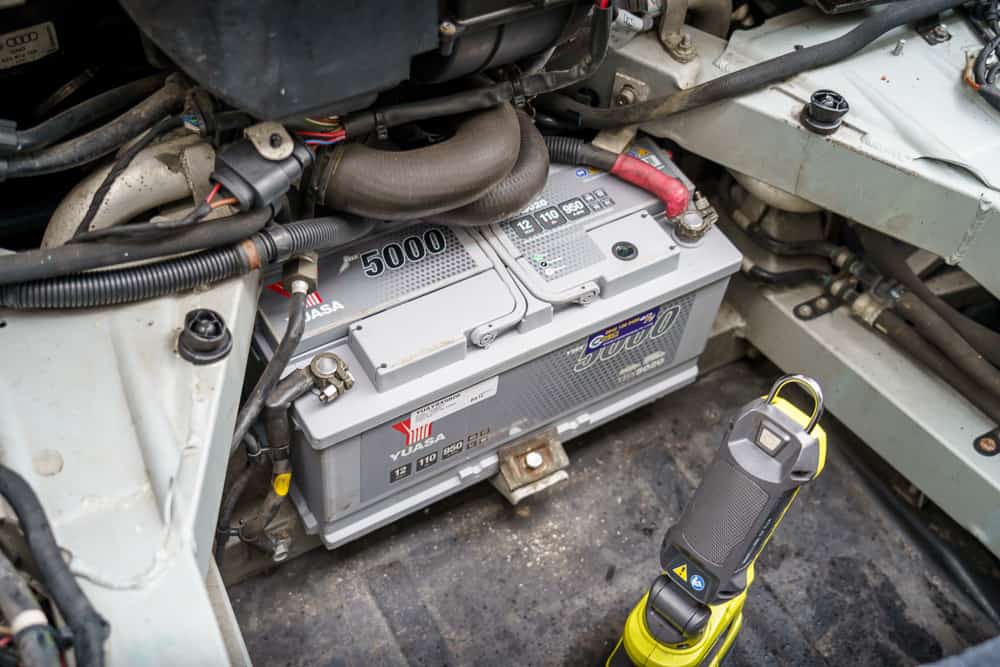
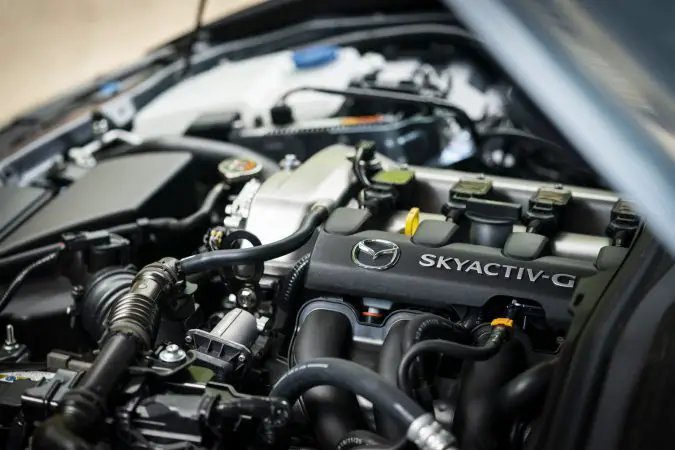
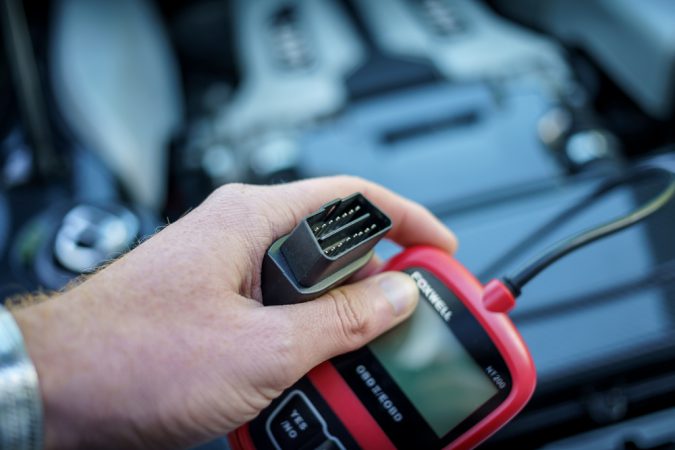
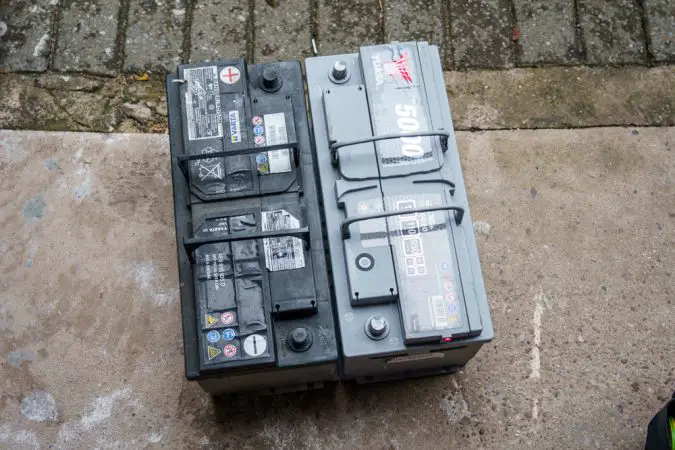
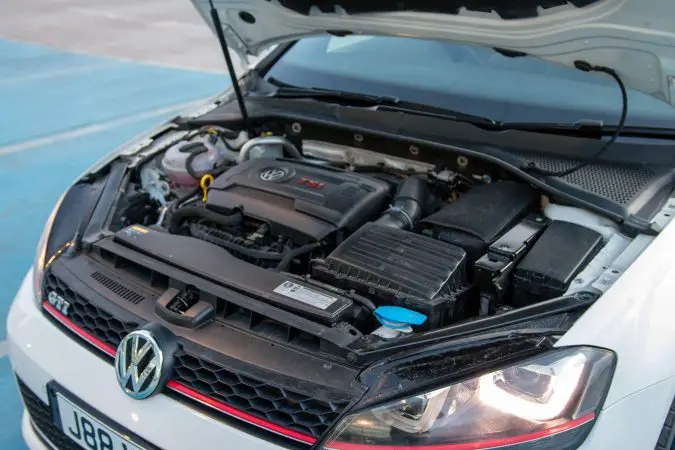
3 comments
Can I still use a second hand battery?
Thanks for the comment, Raphael Horneman!
Yes, you can still use a second-hand 12V battery for your car. However, there are a few things to consider before fitting one in. For starters, you’ll have to make sure that it’s still in good condition. Begin by checking how old the battery is – they start to fail after 3 to 5 years. Anything below that, say 1 or 2 years old, should still be solid and safe to use. While you’re there, you should also check for other signs of damage, like corrosion, on the battery. If you’re buying a second hand battery, you could also ask the seller if there’s any warranty, too.
Thank you. I’m more enlightened now. the issue with my car is that, the car is starting but the Engine is not raising